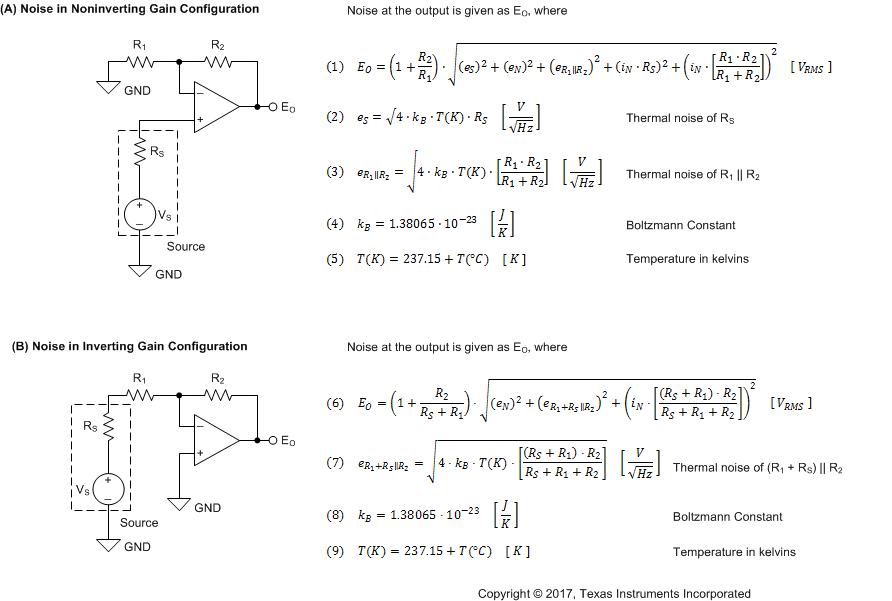JAJSNV3C june 2022 – july 2023 OPA186 , OPA2186 , OPA4186
PRODUCTION DATA
- 1
- 1 特長
- 2 アプリケーション
- 3 概要
- 4 Revision History
- 5 Pin Configuration and Functions
- 6 Specifications
- 7 Detailed Description
- 8 Application and Implementation
- 9 Device and Documentation Support
- 10Mechanical, Packaging, and Orderable Information
パッケージ・オプション
メカニカル・データ(パッケージ|ピン)
サーマルパッド・メカニカル・データ
- D|8
発注情報
8.1.1 Basic Noise Calculations
Low-noise circuit design requires careful analysis of all noise sources. In many cases, external noise sources can dominate; consider the effect of source resistance on overall op-amp noise performance. Total noise of the circuit is the root-sum-square combination of all noise components.
The resistive portion of the source impedance produces thermal noise proportional to the square root of the resistance. The source impedance is usually fixed; consequently, select op amp and the feedback resistors that minimize the respective contributions to the total noise.
Figure 8-1 shows both noninverting (A) and inverting (B) op-amp circuit configurations with gain. In circuit configurations with gain, the feedback network resistors also contribute noise. In general, the current noise of the op amp reacts with the feedback resistors to create additional noise components. However, the extremely low current noise of the OPAx186 means that the current noise contribution can be ignored.
The feedback resistor values can generally be chosen to make these noise sources negligible. Low impedance feedback resistors load the output of the amplifier. The equations for total noise are shown for both configurations.
